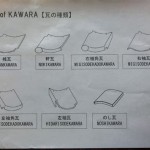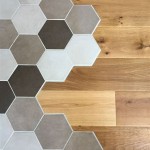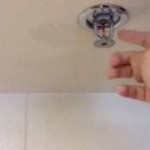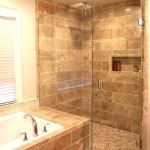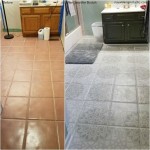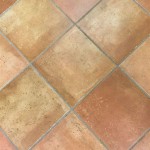Can I Put Tile Backsplash On Drywall? A Comprehensive Guide
Installing a tile backsplash is a popular way to enhance the aesthetic appeal and functionality of a kitchen or bathroom. The durability and ease of cleaning offered by tile make it a practical choice for areas prone to moisture and splashes. A common question that arises during planning is whether tile can be directly installed on drywall. The answer is generally yes, but with important considerations to ensure a successful and long-lasting installation. This article provides a detailed examination of the process, highlighting critical steps and potential pitfalls.
Drywall, also known as gypsum board, is a widely used building material for walls and ceilings. It consists of a gypsum plaster core pressed between two sheets of thick paper. While drywall is relatively inexpensive and easy to install, it's not inherently waterproof or extremely durable. Therefore, proper preparation and installation techniques are essential when applying tile backsplash directly onto it.
Preparing the Drywall Surface for Tile
The initial step in installing a tile backsplash on drywall is preparing the surface. A smooth, clean, and structurally sound surface is crucial for proper tile adhesion and to prevent future problems such as tile cracking or detachment. The preparation process involves several key steps.
First, the drywall must be thoroughly cleaned. This involves removing any dust, dirt, grease, or other contaminants that could interfere with the bond between the tile adhesive and the drywall. A mild detergent and water solution can be used for general cleaning, followed by rinsing with clean water. For grease or stubborn stains, a specialized degreaser might be necessary. After cleaning, the drywall must be allowed to dry completely before proceeding.
The next step is to inspect the drywall for any damages or imperfections. Cracks, holes, or loose sections must be repaired before tiling. Small cracks can be filled with joint compound, also known as drywall mud, and sanded smooth after drying. Larger holes require patching with drywall pieces secured to the studs. The patched areas should be feathered out with joint compound to blend seamlessly with the surrounding drywall. Significant damage affecting the structural integrity of the drywall might necessitate replacing the affected sections entirely.
Sanding the drywall is an important step in creating a suitable surface for tile adhesion. The goal is not to make the drywall perfectly smooth, but rather to create a slightly textured surface that will allow the tile adhesive to grip effectively. Lightly sanding the drywall with a fine-grit sandpaper (e.g., 120-grit or 150-grit) is usually sufficient. After sanding, it is crucial to remove all sanding dust thoroughly. A vacuum cleaner with a brush attachment is recommended, followed by wiping the surface with a damp cloth.
Priming the drywall is another crucial step that significantly enhances the bond between the drywall and the tile adhesive. A primer is a coating applied to the drywall surface that creates a uniform and slightly textured surface for the adhesive to adhere to. It also seals the drywall, preventing it from absorbing moisture from the adhesive, which could weaken the bond. An acrylic latex primer specifically designed for tile applications is recommended. The primer should be applied evenly using a brush or roller, following the manufacturer's instructions regarding drying time. Multiple coats may be necessary for heavily textured or porous drywall.
The type of primer used can affect the outcome. Using a low-quality primer or skipping the priming step altogether can lead to adhesion problems and premature tile failure. It's crucial to invest in a high-quality primer specifically formulated for tile applications on drywall to ensure a long-lasting and durable tile backsplash.
Selecting the Right Tile Adhesive and Grout
Choosing the appropriate tile adhesive and grout is as important as preparing the drywall surface. The adhesive, also known as thin-set mortar, is responsible for bonding the tile to the drywall, while the grout fills the spaces between the tiles, providing a finished look and preventing water from penetrating behind the backsplash.
For tile backsplash installations on drywall, a modified thin-set mortar is generally recommended. Modified thin-set contains polymers that enhance its bonding strength, flexibility, and water resistance. These properties are particularly important in areas prone to moisture and temperature fluctuations, such as kitchens and bathrooms. The type of tile being used will also influence the choice of thin-set. For example, large format tiles or natural stone tiles may require a specific type of modified thin-set designed for their weight and porosity.
When selecting thin-set, it's crucial to read the manufacturer's instructions carefully and choose a product that is specifically formulated for use on drywall and compatible with the type of tile being installed. Pay attention to the open time (the amount of time the thin-set remains workable after being applied) and the cure time (the time required for the thin-set to fully harden). Following the manufacturer's instructions regarding mixing and application is essential for ensuring a proper bond.
Grout is available in various types, including sanded, unsanded, and epoxy grout. The choice of grout depends on the size of the grout joints and the type of tile being used. Sanded grout is typically used for grout joints wider than 1/8 inch, while unsanded grout is suitable for narrower joints. Epoxy grout is a more expensive option, but it offers superior stain resistance and durability, making it a good choice for high-traffic areas or areas exposed to harsh chemicals. Regardless of the type of grout chosen, it's important to select a color that complements the tile and the overall design of the space.
Before applying the grout, the tile adhesive must be fully cured, as per the manufacturer’s instructions. Applying grout prematurely can interfere with the curing process and weaken the bond between the tile and the drywall. After the grout has been applied and allowed to cure, it should be sealed with a grout sealer to protect it from stains and moisture. Regular cleaning with a mild detergent and water will help to maintain the appearance of the grout and prevent the growth of mold and mildew.
Alternatives to Drywall for Tile Backsplash
While tiling directly onto drywall is a common practice, there are situations where using an alternative substrate is a better option. Factors such as high moisture levels, the weight of the tile, or the desire for enhanced durability may warrant the use of a different material.
Cement board, also known as cement backer board, is a popular alternative to drywall for tile installations, particularly in wet areas such as showers and tub surrounds. Cement board is made from cement and reinforcing fibers, making it highly water-resistant and durable. It provides a stable and solid surface for tile, minimizing the risk of cracking or detachment. Cement board is typically installed over studs and secured with screws. The seams between the boards must be taped and mudded with thin-set mortar to create a waterproof barrier.
Another alternative is using a waterproofing membrane over the drywall. These membranes are designed to create a waterproof barrier that protects the drywall from moisture penetration. They can be applied as a liquid or as a sheet membrane. Liquid membranes are typically applied with a brush or roller, while sheet membranes are adhered to the drywall surface with a self-adhesive backing. Waterproofing membranes provide an extra layer of protection against moisture damage, making them a good choice for areas with high humidity or frequent water exposure.
Plywood is generally not recommended as a substrate for tile in wet areas. While plywood can be used in some dry applications, it is susceptible to moisture damage and can warp or delaminate over time, leading to tile failure. If plywood is used as a substrate, it must be exterior-grade plywood and properly sealed to prevent moisture penetration. However, cement board or a waterproofing membrane is a more reliable choice for tile installations in wet areas.
In situations where heavy tiles, such as large format porcelain or stone tiles, are being used, reinforcing the drywall may be necessary. This can be achieved by adding additional support behind the drywall or by replacing the drywall with a thicker and more rigid material. Consulting with a professional tile installer or contractor is recommended to determine the best course of action for heavy tile installations.
Ultimately, the decision of whether to tile directly onto drywall or use an alternative substrate depends on the specific circumstances of the project. Factors such as the moisture level, the type of tile, and the desired level of durability should be considered when making this decision. Proper preparation, the use of high-quality materials, and adherence to industry best practices are essential for ensuring a successful and long-lasting tile backsplash installation.

How To Install Tile Backsplash Fixthisbuildthat

Can You Tile Over Drywall Must See

How To Install Tile Backsplash Fixthisbuildthat

How To Install Tile Backsplash Fixthisbuildthat

How To Prepare Drywall For A Tile Backsplash Mr Handyman

A Subway Tile Backsplash Install Art Renovation

How To Prepare Drywall For A Tile Backsplash Mr Handyman

How To Add Subway Tile Backsplash Over Drywall Transform Your Kitchen For 100

Help Cement Board Sheetrock More Drywall For Tiling Kitchen Backsplash Hometalk

Subway Tile Backsplash Diy For Beginners Bless This Nest
Related Posts

